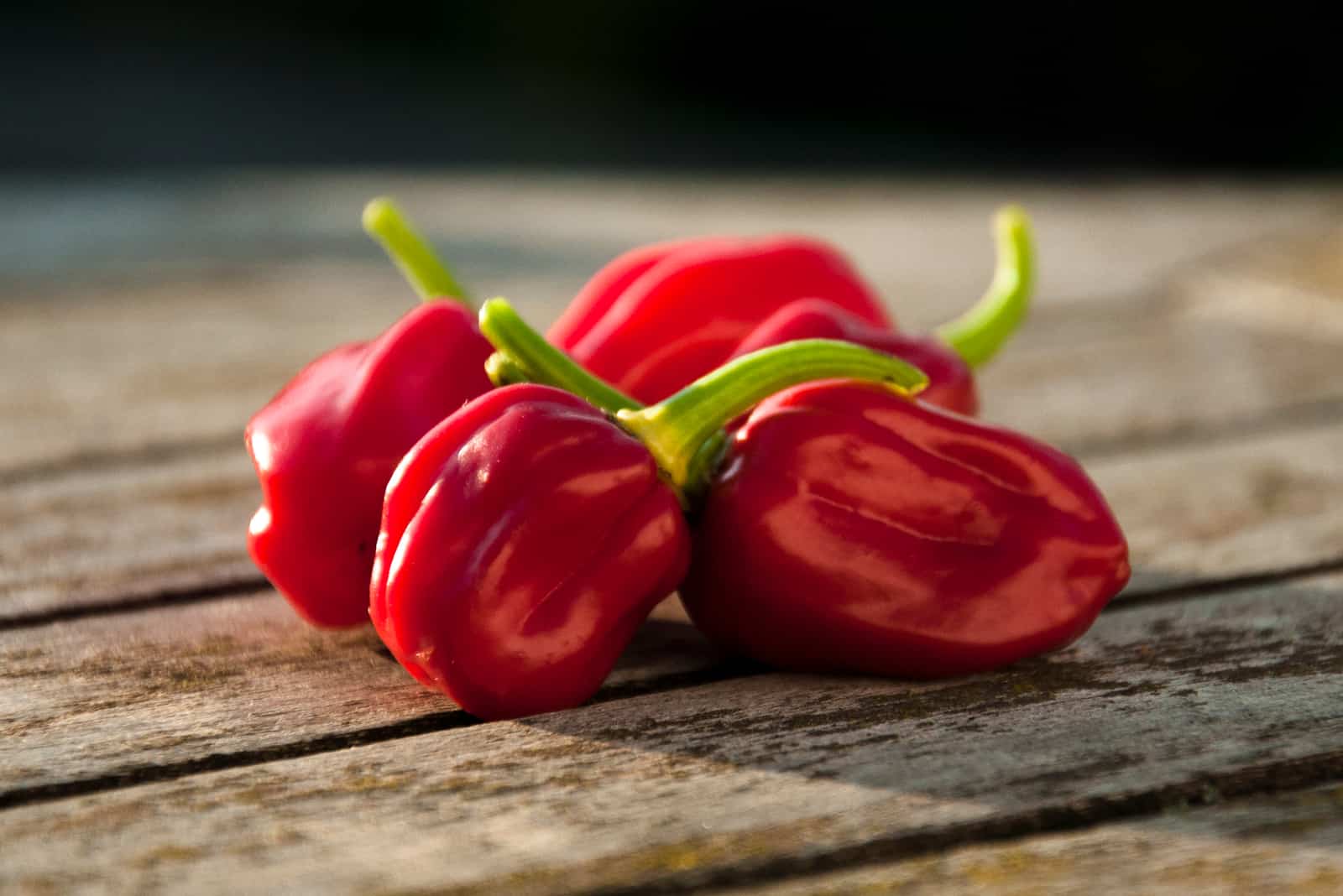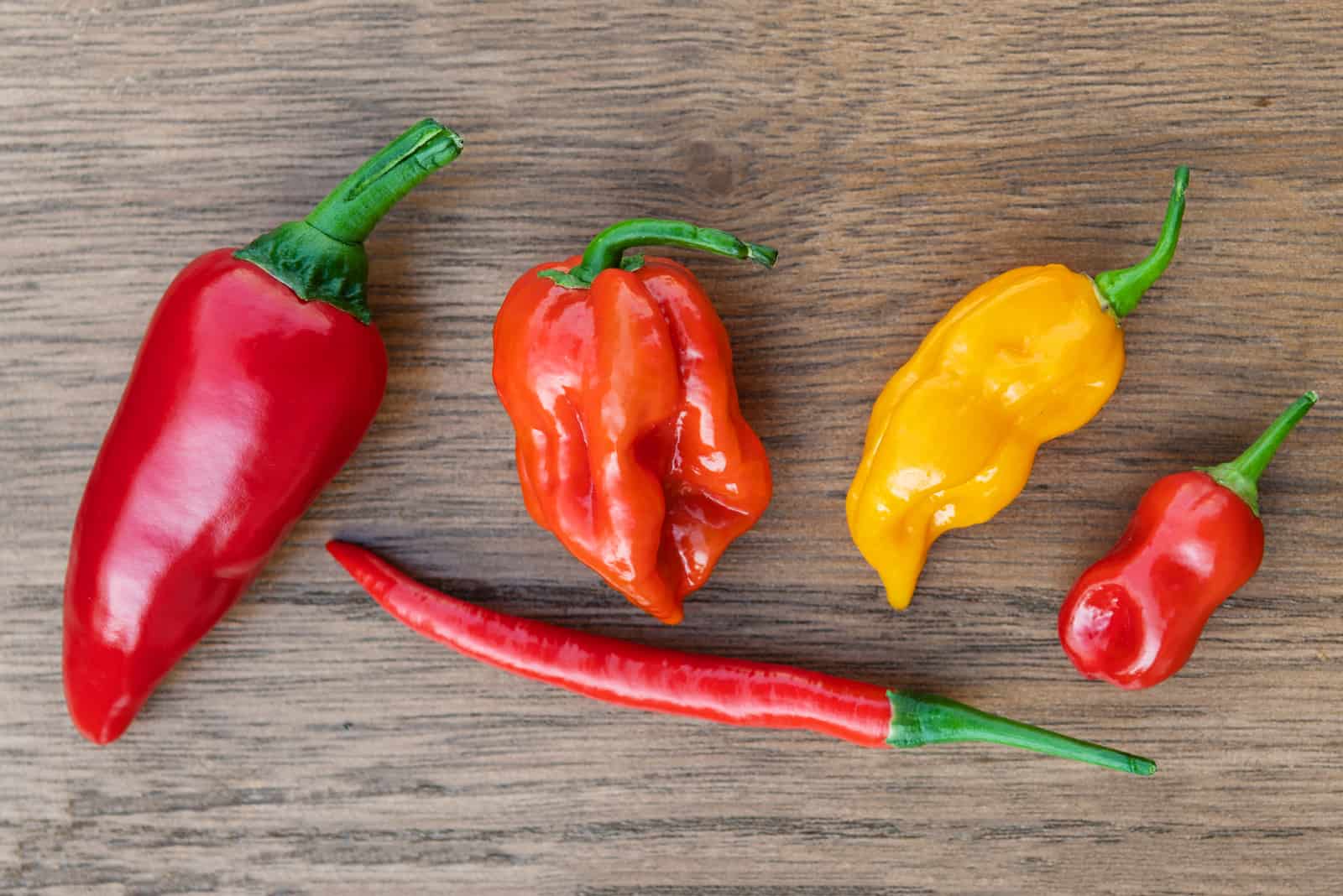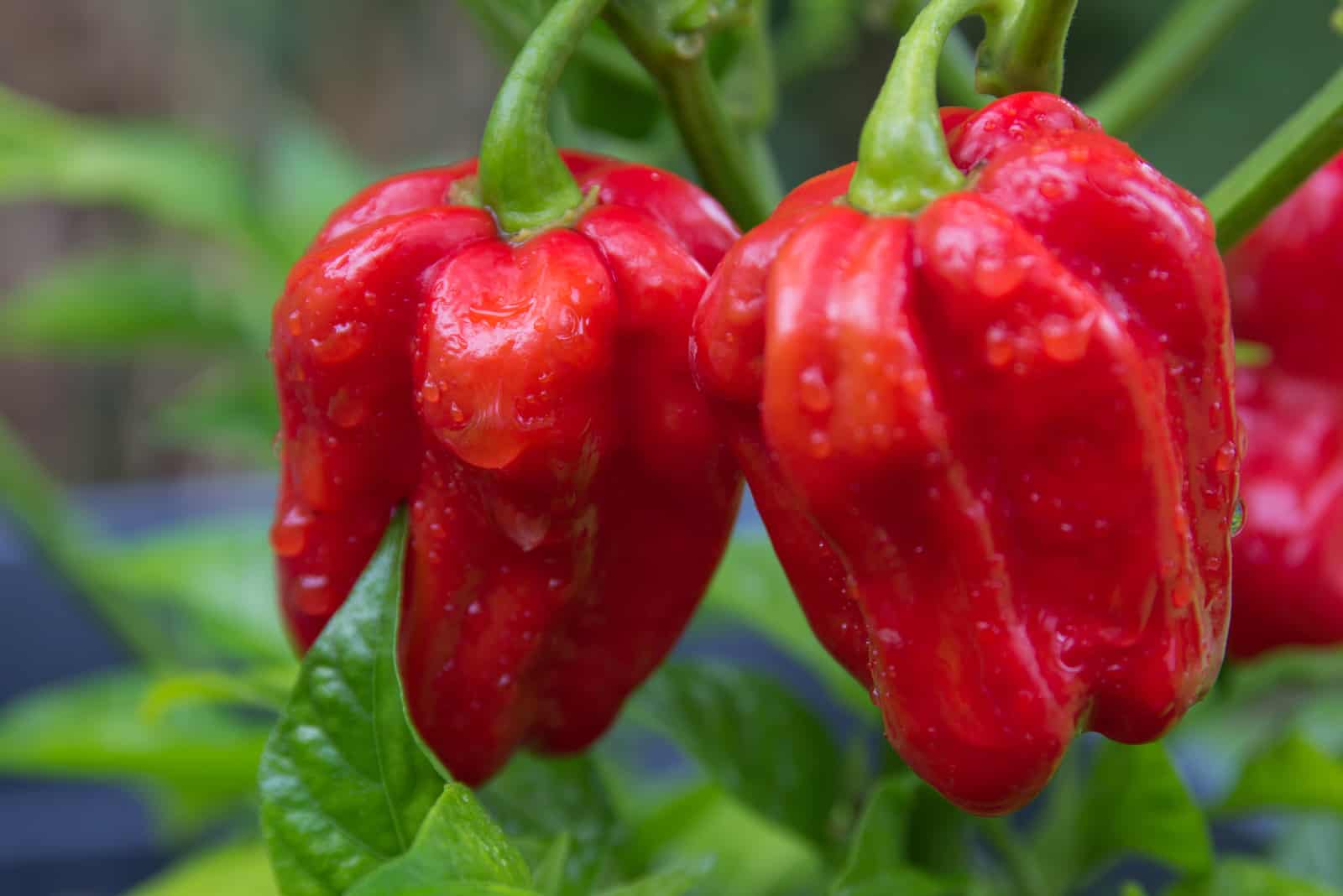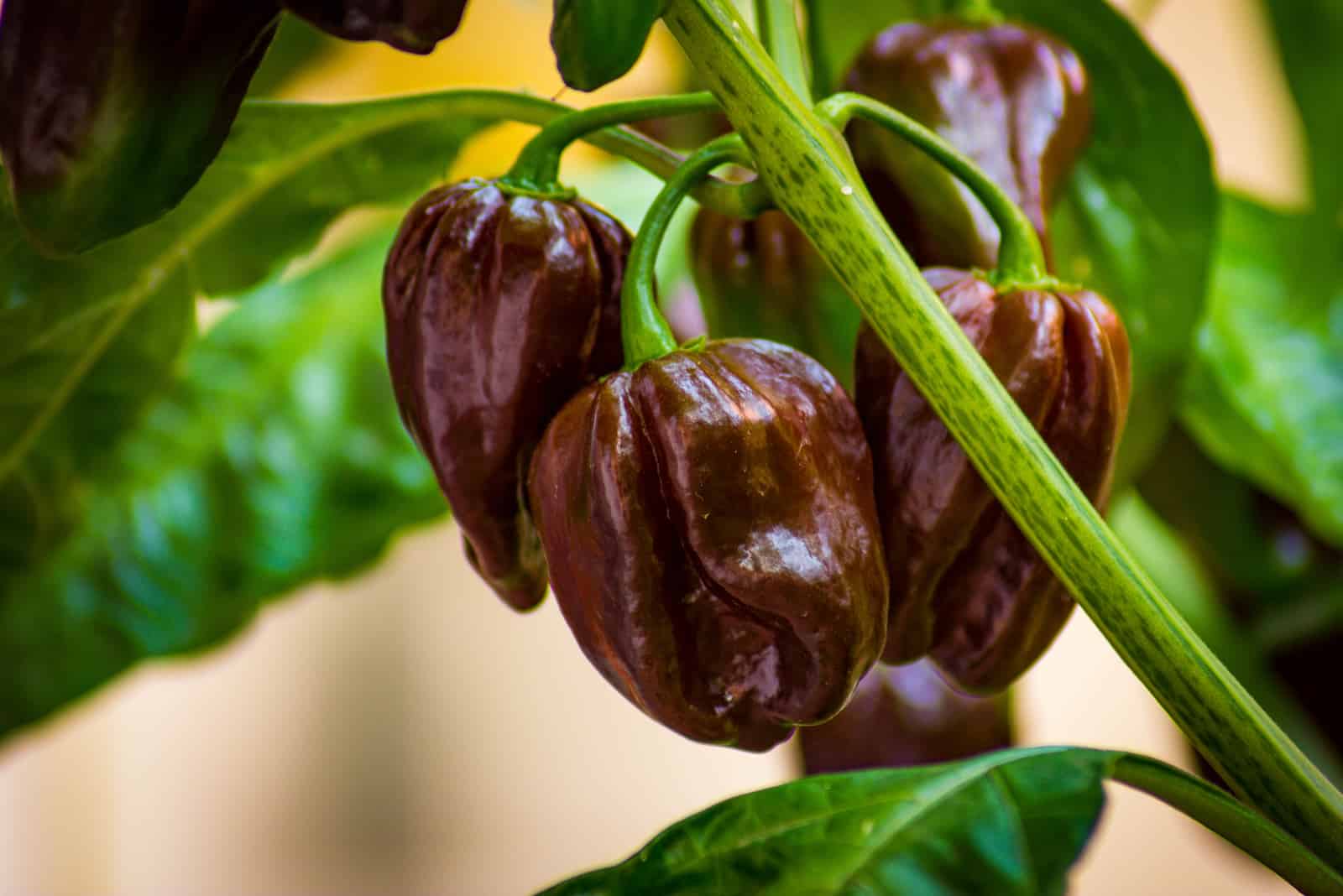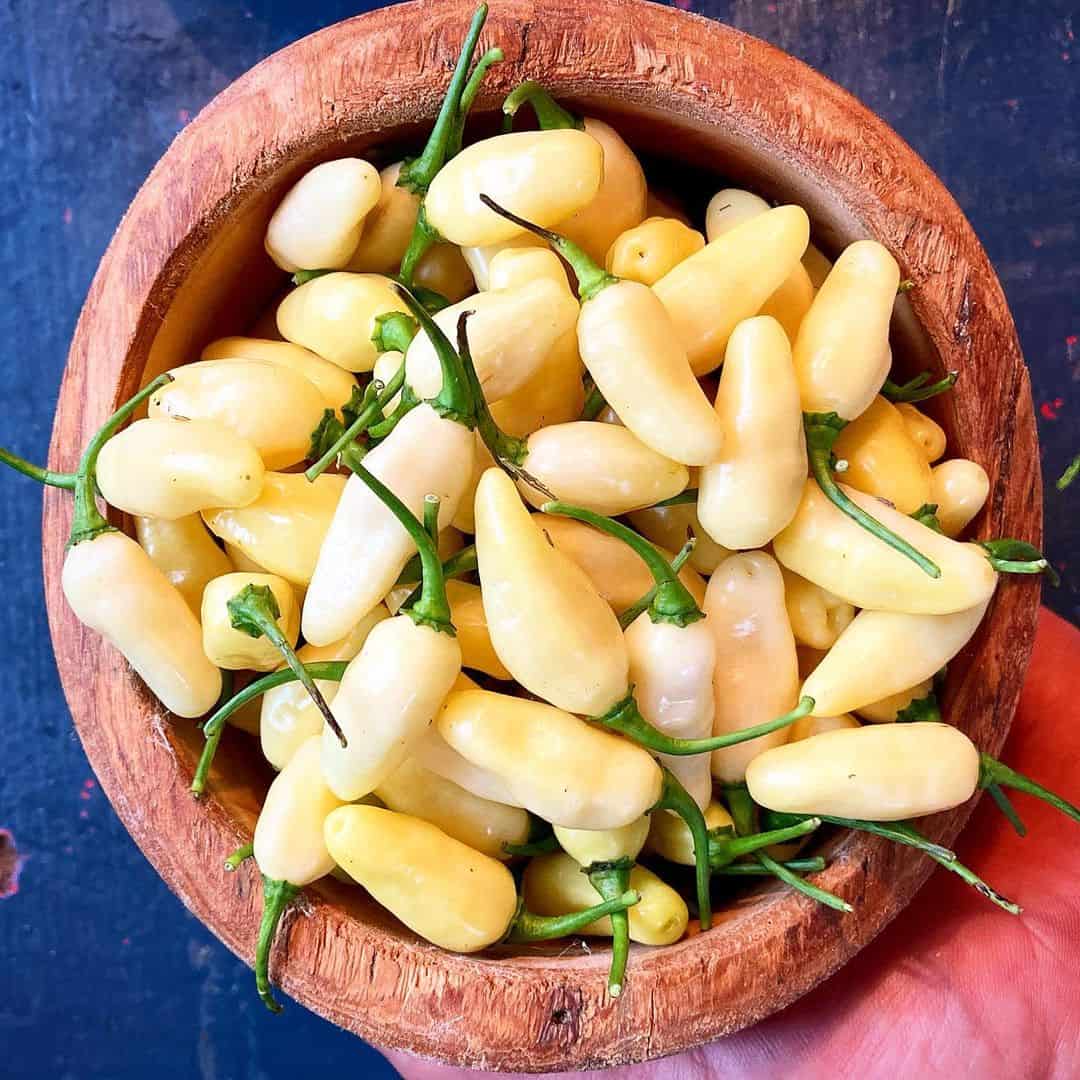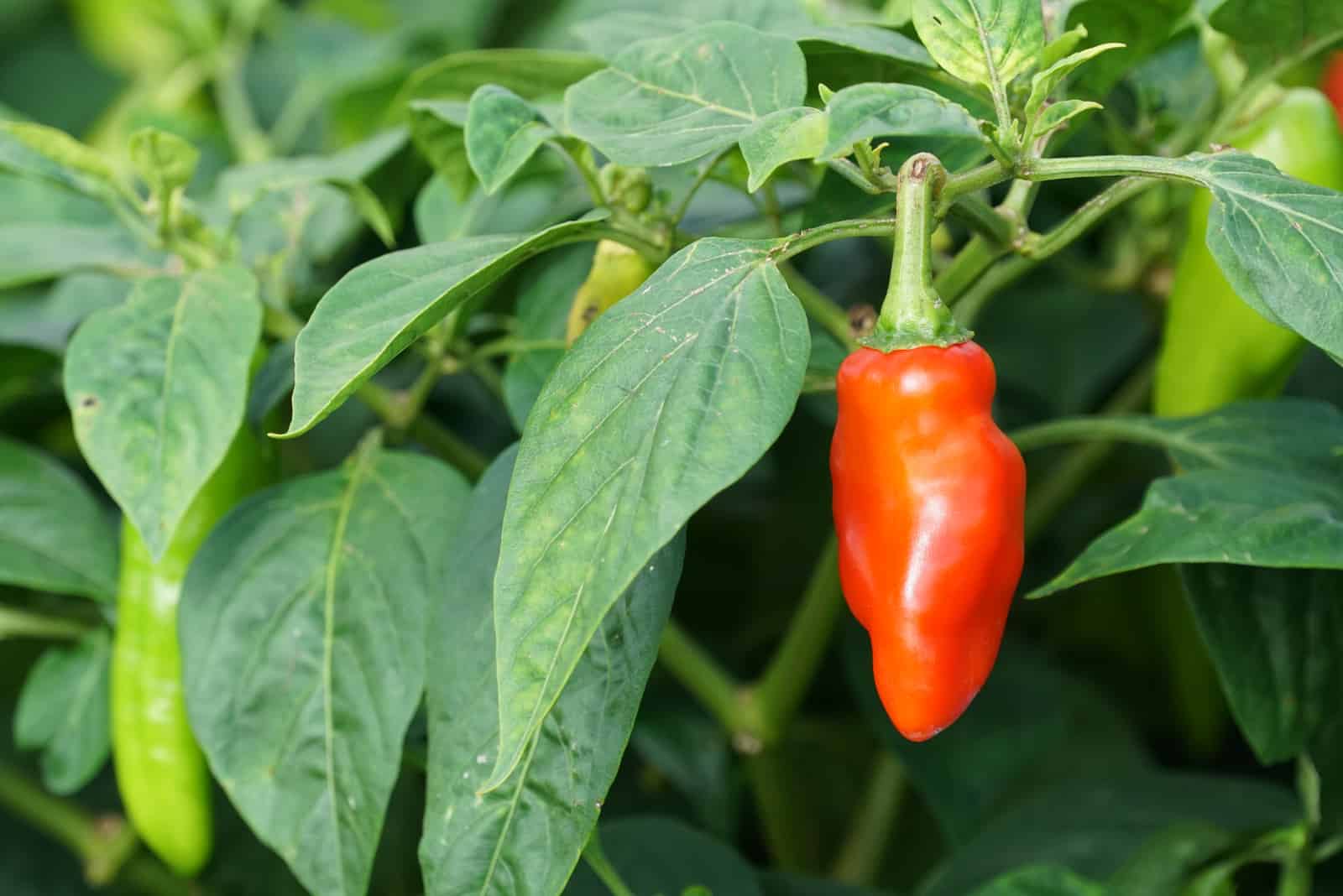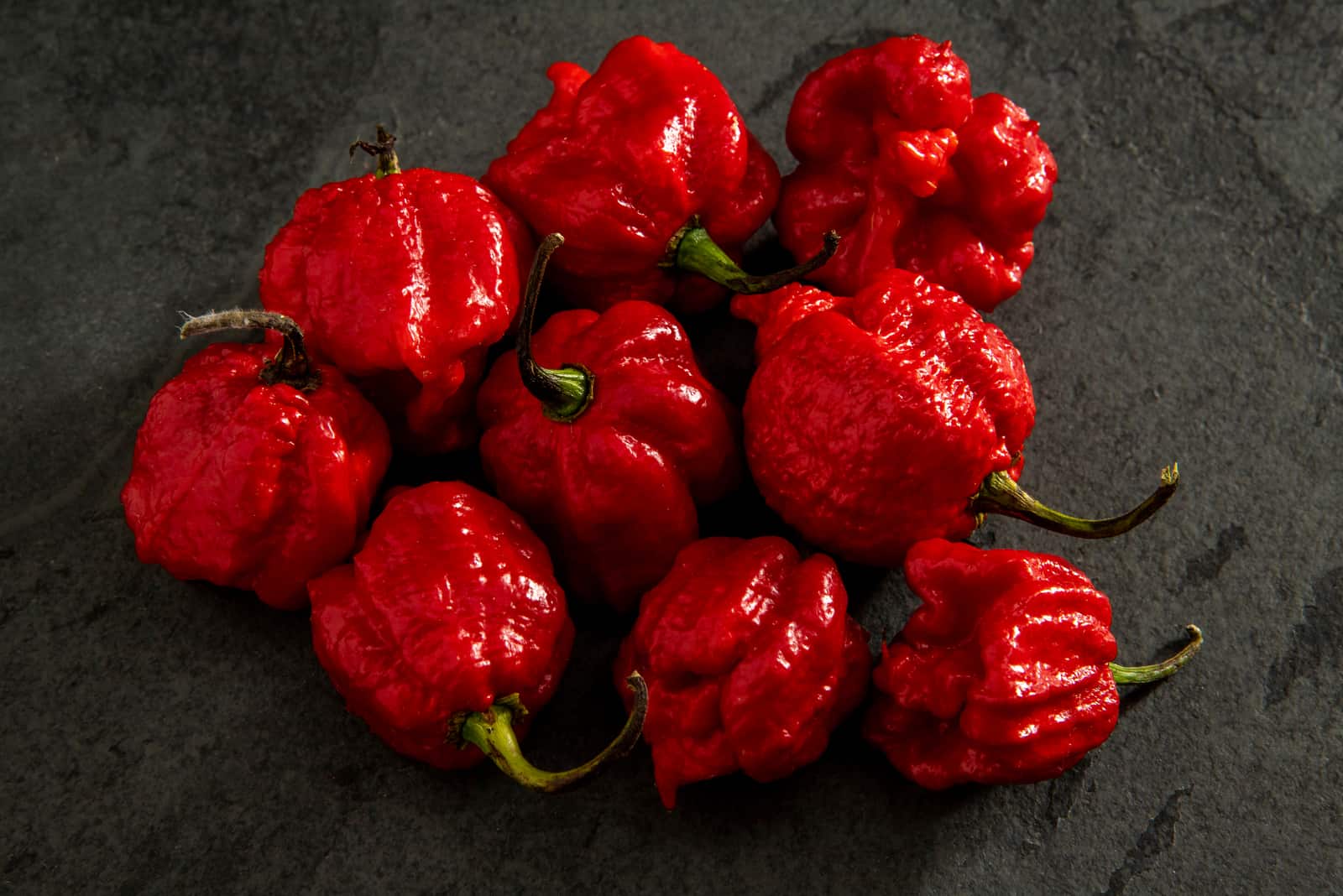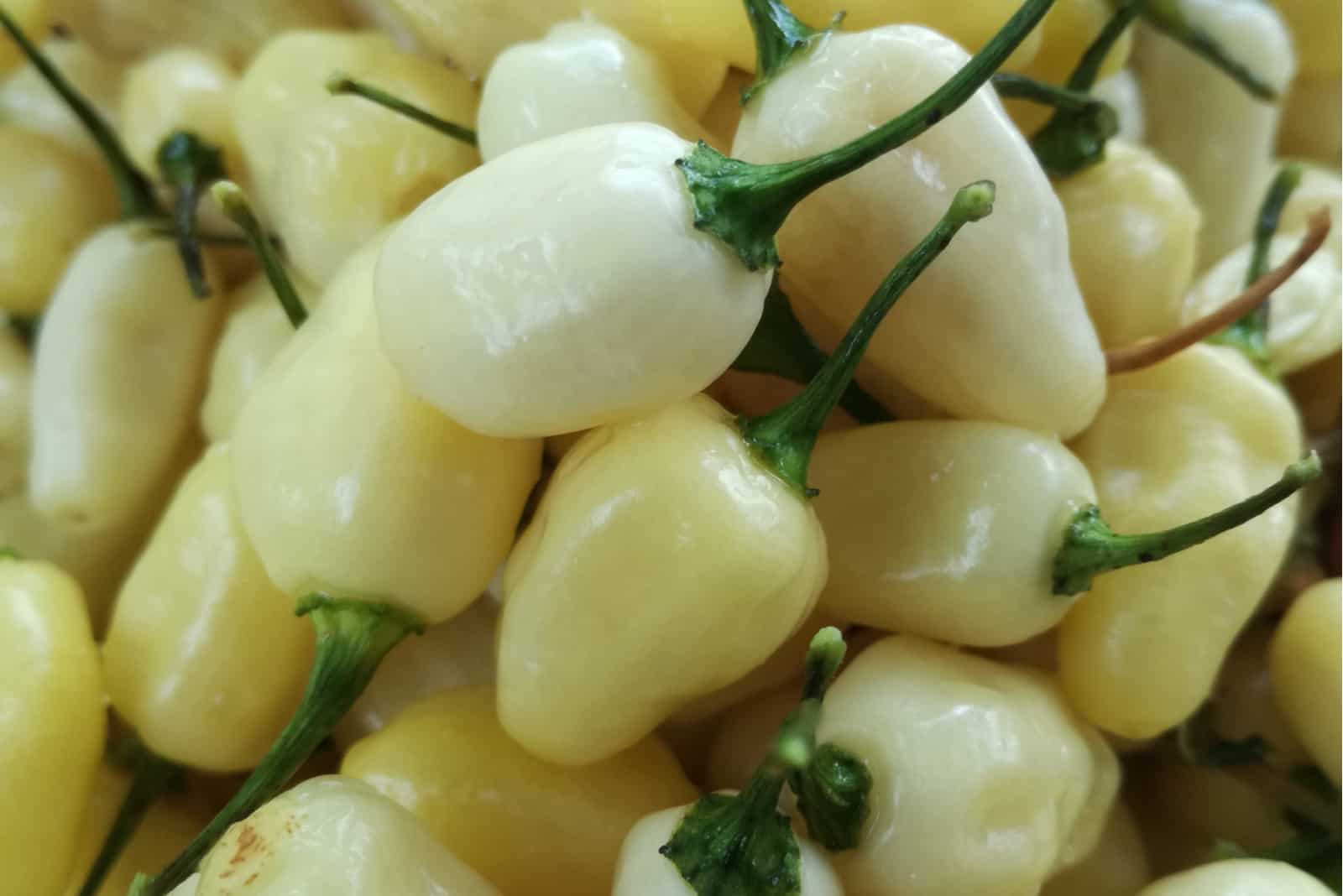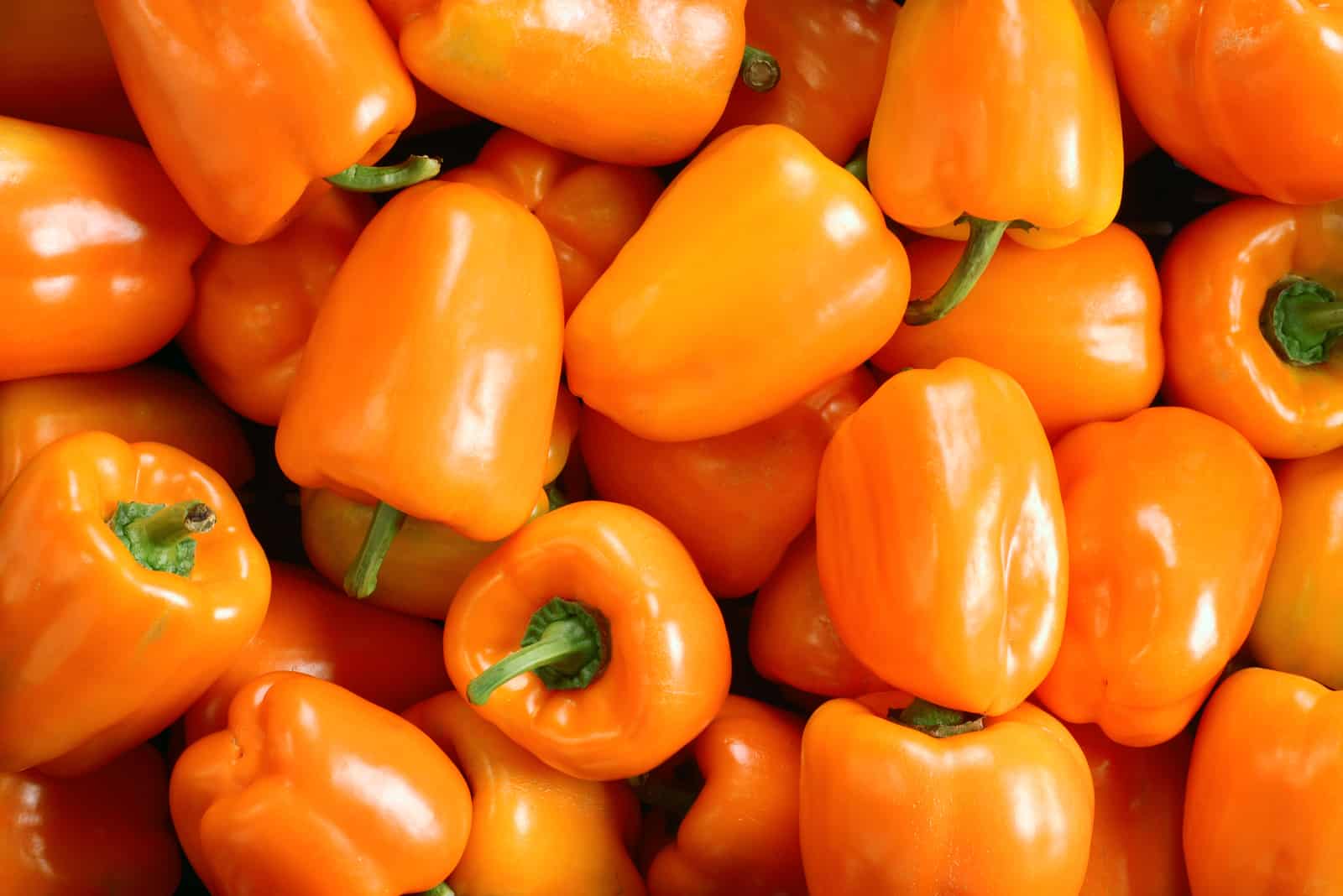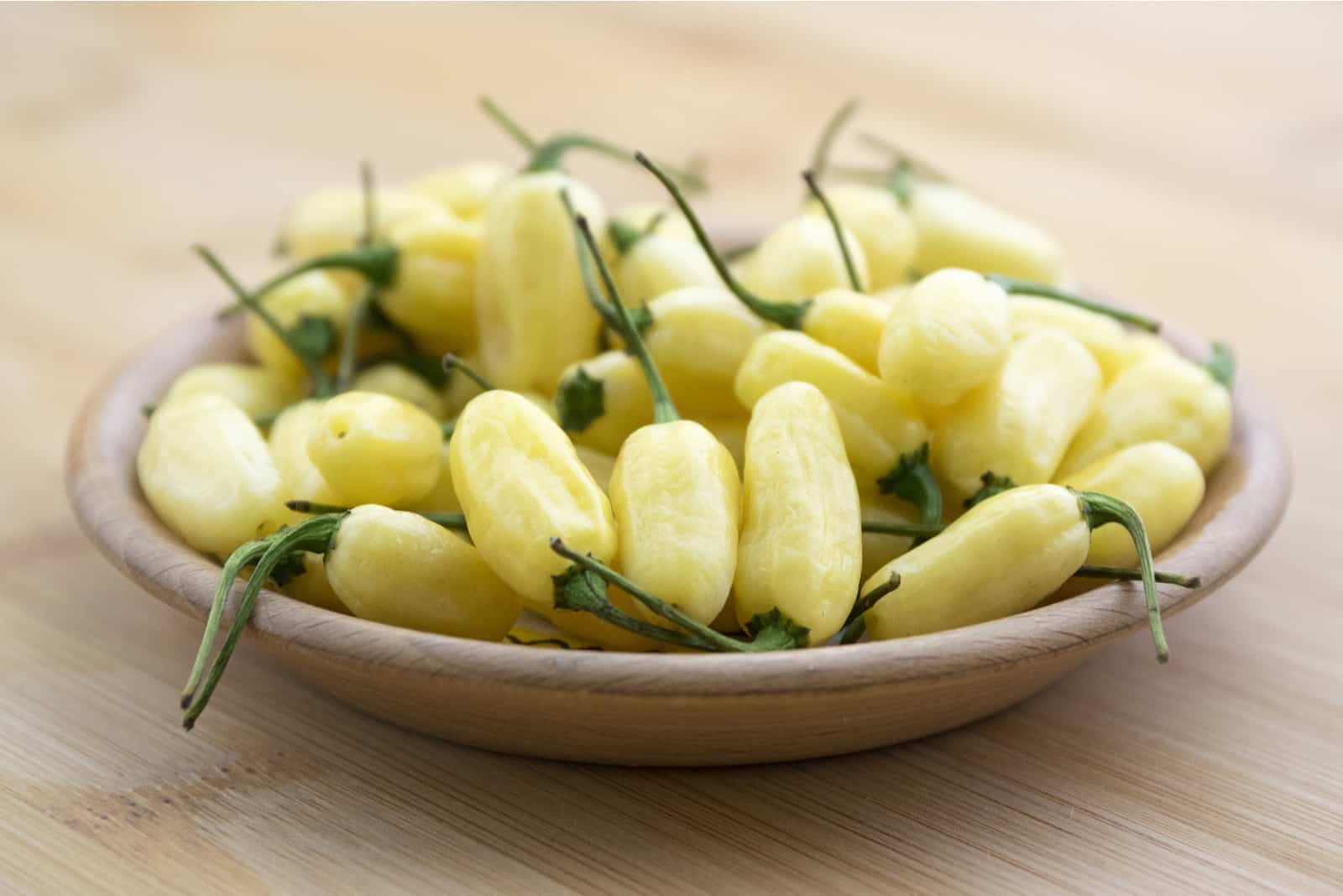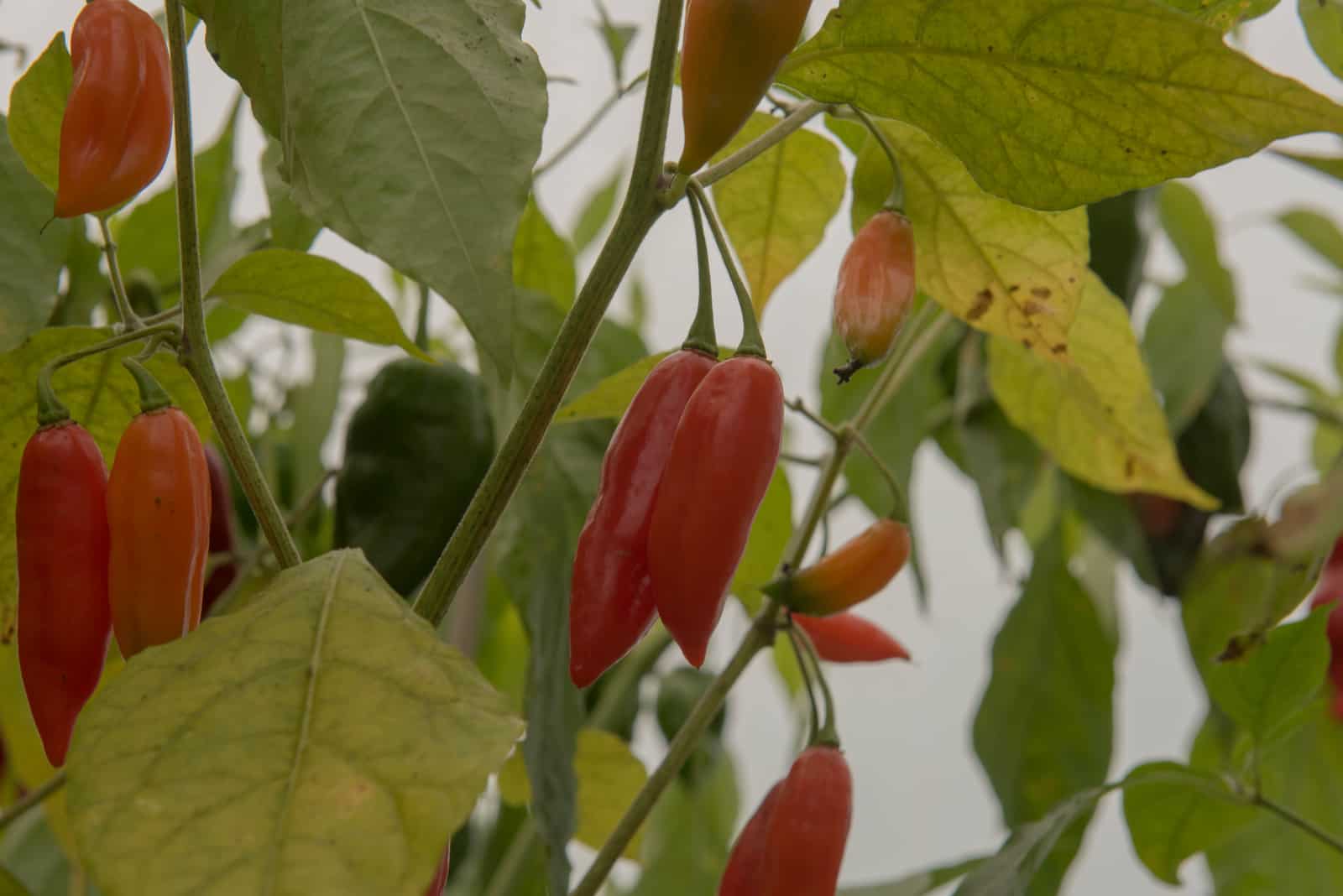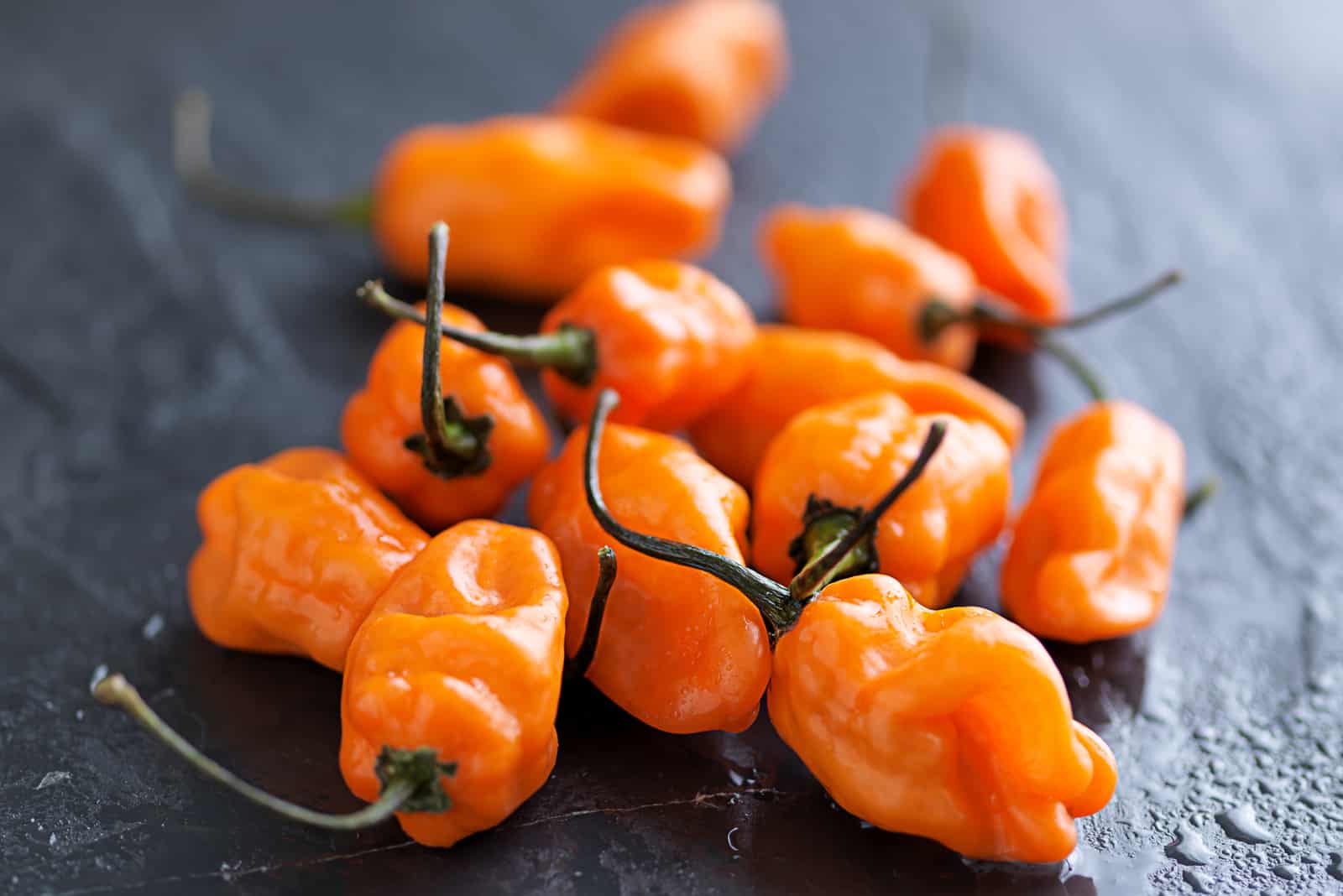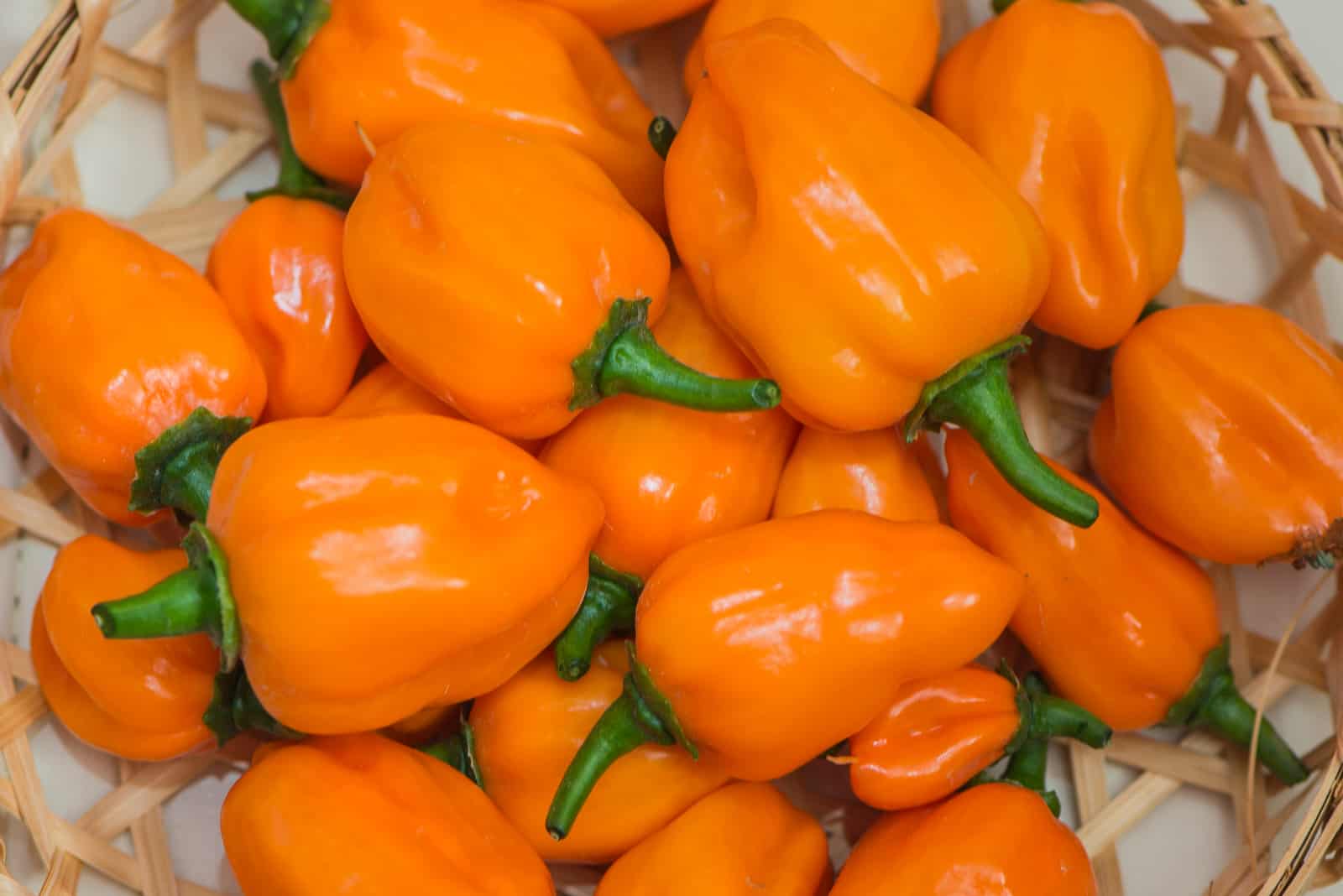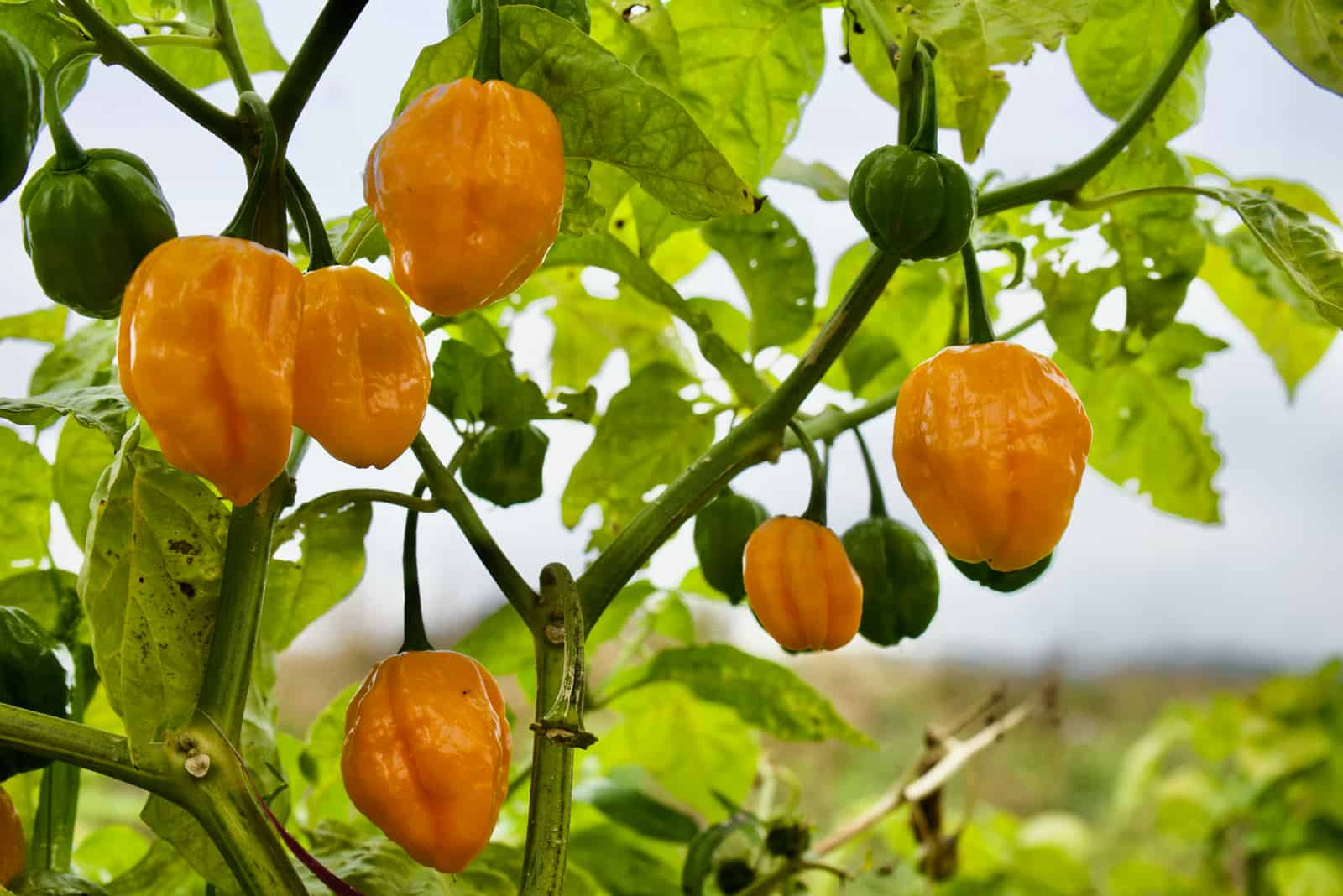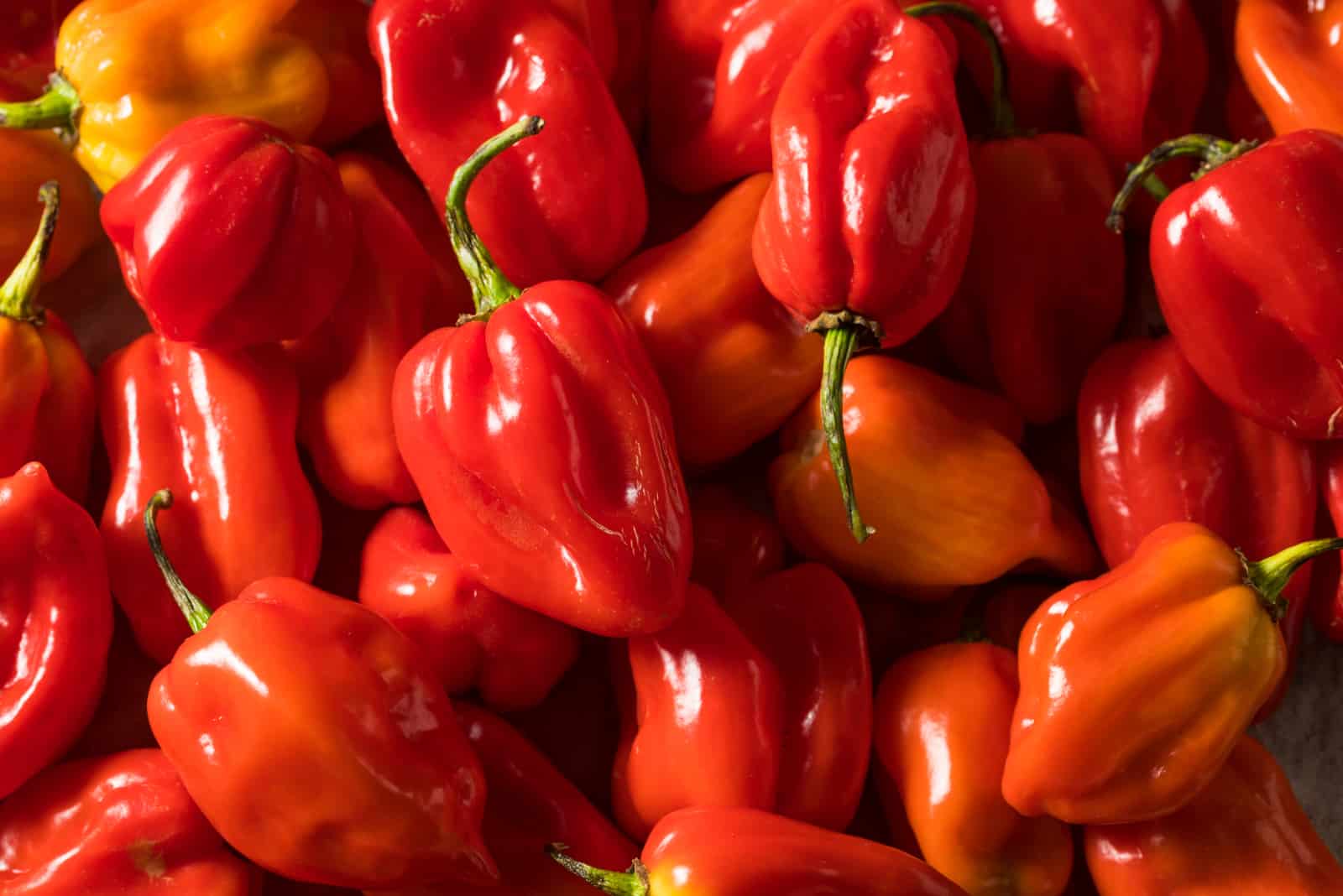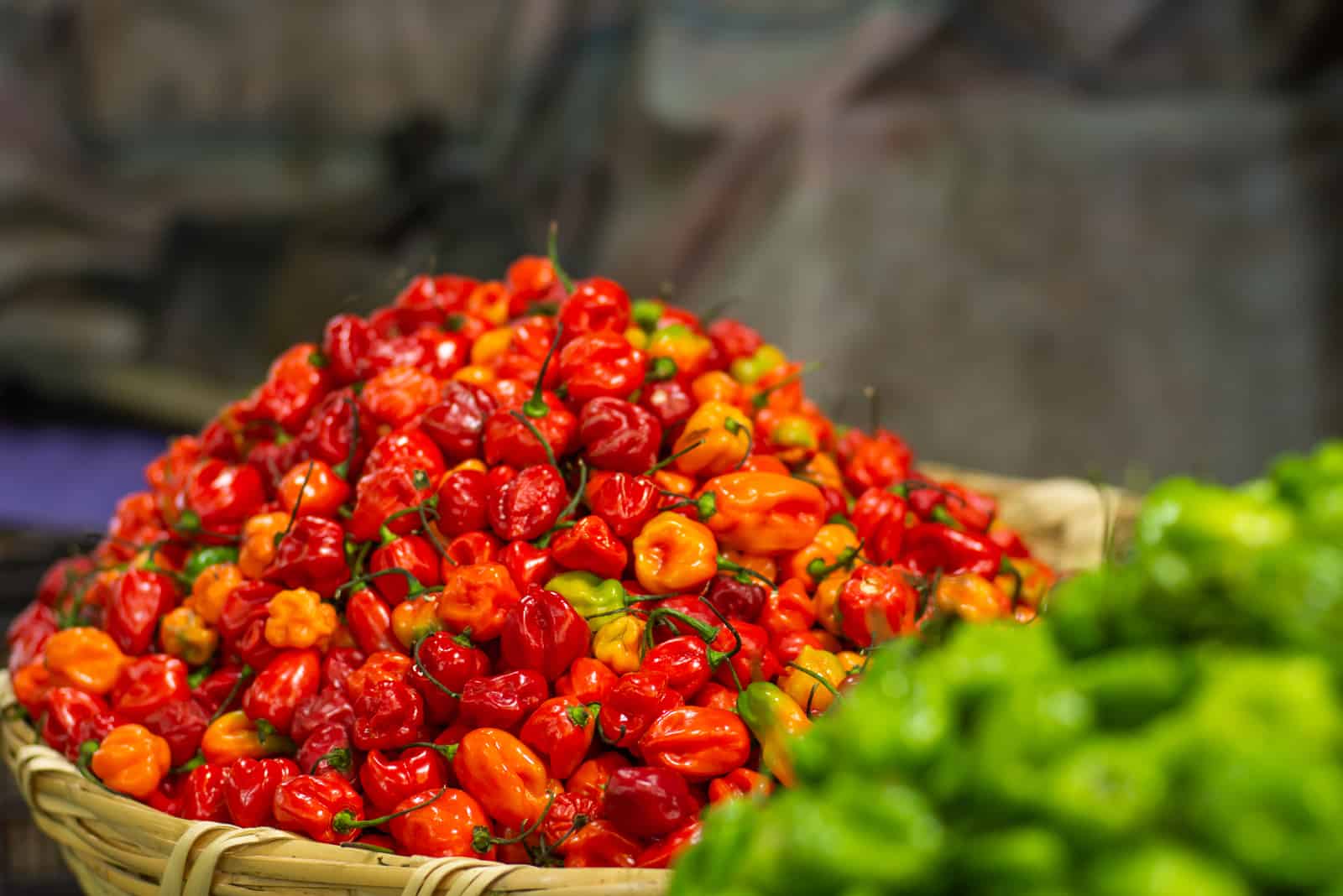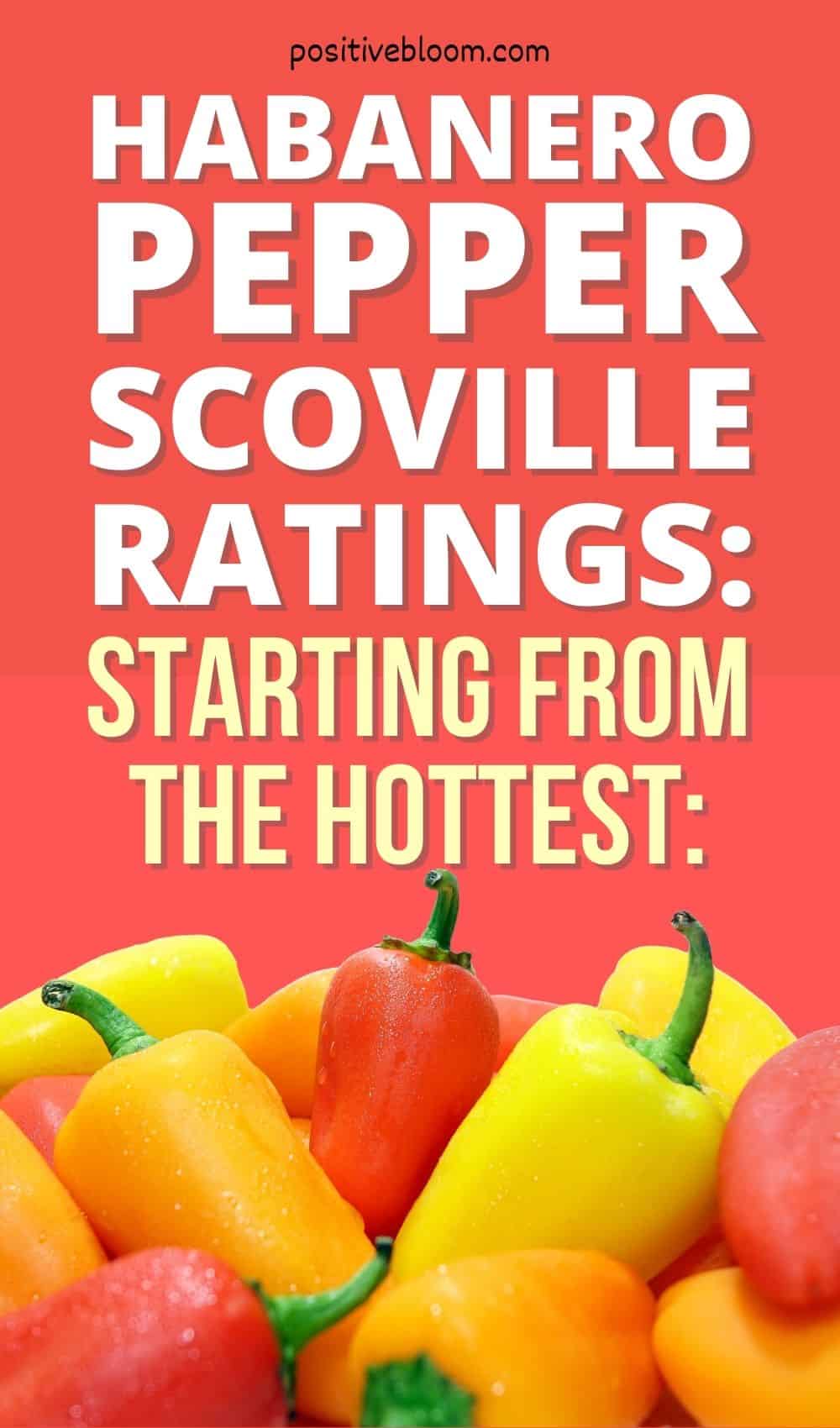Positive Bloom is an Amazon Associate and we earn from qualifying purchases through these links at no extra cost to you.
Trinidad Moruga Scorpion, Ghost pepper, Habanero pepper, Cayenne pepper… these are some of the hottest peppers in the world according to Scoville heat units (SHU).
Do you want to know where your favorite habanero pepper ranks?
Habanero peppers are popular chili peppers used for making delicious hot sauces and are often used in cooking. They were proclaimed as the hottest chili peppers in the world in 1999.
Since then, new hot peppers have been cultivated and stolen the habanero’s title. However, that doesn’t mean that habanero peppers are not spicy! Trust me, you might need a fire extinguisher after eating even one habanero pepper!
If you want to know what the hottest habanero peppers are, then check out the Habanero Pepper Scoville list below.
Let’s get started!
What Is The Habanero Pepper Scoville Scale?
Did you know that heat in peppers can actually be measured and used to determine what the hottest pepper in the world is?
Science is truly amazing!
The Scoville Scale was invented in 1912 by a pharmacologist named Wilbur Scoville, and it represents a measurement of spiciness, or pungency, in hot peppers recorded in SHU (Scoville heat units).
This is done by measuring the amount of capsaicin present in peppers. Capsaicin is a chemical substance that makes peppers spicy.
So, how do they do it?
Before modern technology, they measured the amount of water they had to add to chili pepper until it stopped being super spicy. Nowadays, scientists use High-Performance Liquid Chromatography, which directly measures the concentration of capsaicin present.
What are some other types of chili peppers?
Different chili peppers can be determined based on their heat levels, ranging from those with 0 SHU, like the bell pepper, to intermediate options like Serrano, Poblano, or Thai peppers, and then those that are extremely hot with over a million SHU.
Many people prefer eating peppers that are slightly hot, like Thai peppers, mainly because they want to feel a little heat, but don’t wish to end up vomiting after eating.
In the end, it all depends on your personal taste and style.
Habanero Peppers Ranked By Scoville Scale
Habanero peppers, also known as Capsicum Chinense, are popular spicy peppers initially grown in Mexico, Central, and South America.
Today, you can buy them almost anywhere in the world!
These pepper varieties are easy to take care of, and you can even grow them in your own garden if you are a fan of spicy food.
Habanero peppers can be found in the extra-hot zone on the Scoville Scale, taking fourth place with 100,000–350,000 SHU.
Check out this list of habanero pepper varieties sorted by the Scoville Scale if you are interested in growing the hottest habanero pepper.
1. Red Savina Habanero
SHU: 580,000
Origin: United States
Flavor: Fruity flavor
Use: Culinary
We previously mentioned that habanero peppers were once proclaimed as the hottest chili pepper by the Guinness World Record book, and the Red Savina habanero actually earned this title!
However, the record was stolen by Bhut Jolokia in 2007.
This super hot pepper plant has a fruity, almost sweet-heat flavor, and is easy to take care of, which is why newbie growers often choose to grow this habanero pepper even though it’s the hottest.
The Red Savina habanero has a distinctive shape, like a Chinese lantern, which is characteristic of habanero peppers. It can usually grow about 2 inches long.
Frequently found in pepper recipes, the Red Savina habanero has become quite popular. You can probably find it in your local grocery store, so you should go and buy it if you want to know what hell tastes like!
2. Chocolate habanero
SHU: 577,000
Origin: Jamaica
Flavor: Smokey and fruity
Use: Culinary – sauces mainly
The Chocolate habanero is a very hot and unique pepper that comes in second on the habanero pepper scale of hotness!
Don’t mind the name of this habanero pepper – it tastes nothing like chocolate.
The Chocolate habanero pepper has a spicy, kind of smokey flavor, which is why it is often used for making salsas and BBQ sauces.
This Jamaican pepper can grow about 3 inches long and is easy to take care of. The peppers have a dark-brown color when ripe, hence the name chocolate habanero.
Many people invest in making a suitable environment for growing this habanero pepper, mainly because they can earn a ton of money by making their own sauces and selling them for good prices.
3. Yucatan White habanero
Photo from: @stonerhots
SHU: 500,000
Origin: Yucatan Peninsula
Flavor: Fruity, sweet
Use: Culinary – sauces
The Yucatan white habanero is known for being one of the most interesting looking Capsicum Chinense members, and produces peppers that look just like jelly beans!
In this case, very spicy jelly beans.
These peppers start growing in a green color and then eventually change to white, which means that they are ripe and ready for harvesting.
Even though we often associate red with spiciness, the world can be full of surprises!
4. Devil’s Tongue Red
SHU: 500,000
Origin: United States
Flavor: Sweet, fruity
Use: Culinary – salsa & powders
Finally, an appropriate name for a hot pepper!
The devil’s tongue red is a type of habanero pepper that looks exactly like its name suggests, and it’s also hot as hell.
Mainly used for making chilli powders and salsas, this habanero is quite rare – maybe because people don’t want to grow the Devil in their garden, who knows?
According to the Scoville rating, the Devil’s tongue red is 65 times spicier than a jalapeno pepper.
5. Caribbean red habanero
SHU: 475,000
Origin: Mexico
Flavor: Fruity, smoky, citrusy
Use: Culinary
If you are a fan of hot peppers, then you must have heard of the Caribbean red habanero!
This Mexican pepper is famous for its smoky flavor, so it is usually added to spice up meals or make remarkable salsas.
You can really distinguish a salsa made with a Caribbean red habanero as it has a unique citrusy taste.
This type of habanero is not frequently found in local supermarkets, so if you are a spice junkie I would recommend you buy seeds and plant the pepper in your garden.
Just be careful when harvesting! Wear gloves and goggles as it can easily burn your skin or you may accidentally touch your eyes, which is incredibly painful!
You should always have milk nearby, just in case.
6. White Bullet habanero
SHU: 400,000
Origin: Caribbean
Flavor: Fruity, smoky
Use: Culinary
The white bullet habanero is a type of hybrid plant which can produce over 1000 tiny peppers.
These chile peppers are white and shaped like a bullet, hence the name white bullet habanero.
They have a relatively long growing season and absolutely love the heat. It’s a shame that they can’t taste themselves though!
7. TigerPaw-NR habanero
SHU: 350,000
Origin: South Carolina
Flavor: Sweet, spicy
Use: Culinary
Similar to the famous orange habanero, this type of pepper is bright-orange in color and is extremely hot!
This hybrid plant has a habanero pepper Scoville rating of almost 350,000 Scoville Heat Units!
A unique thing about this pepper is that it is a hybrid plant and got its name due to its wrinkly orange peppers that look like a tiger paw. The NR in the name stands for “nematode resistant”, which is quite convenient as root-knot nematodes can actually destroy crops.
Growers usually plant this type of habanero because they can yield a lot of peppers in just one growing season.
8. Peruvian White habanero
SHU: 350,000
Origin: Peru
Flavor: Smoky
Use: Culinary, ornamental
Originating from Peru, Peruvian White habaneros are the perfect pepper plants for chilli-lovers that also want an aesthetically pleasing garden.
Often used as an ornamental plant as well, the Peruvian White habanero produces lovely white and creamy peppers shaped like little lanterns. Imagine having numerous white lanterns just hanging in your garden!
Don’t let the innocent white color fool you though!
These tiny peppers are incredibly spicy; 12 to 140 times spicier than jalapeno peppers.
Peruvian White habaneros are also used when making salsas and hot sauces because they add just a perfect touch of smokiness and spiciness.
9. Hot Paper Lantern
SHU: 350,000
Origin: Peru
Flavor: Sweet
Use: Culinary – mainly salsa and powders
The Hot Paper Lantern is famous for being a very productive habanero pepper. It grows in uncommon areas and produces green peppers that slightly change color to hot red at the beginning of the growing season.
They have a unique lantern shape, which is how they got their name. They’re usually a little bit longer than a typical habanero pepper.
They also differ from the rest of the habaneros by having a sweeter taste at first, before the heat kicks in!
Although they do not have the same heat levels as some others, these red peppers are still extremely hot and are definitely not for everyone.
Hot Paper Lanterns are usually dehydrated and made into powders, which are perfect for people who enjoy just a little bit of spiciness in their meals.
10. Habanero Peach
SHU: 350,000
Origin: Caribbean
Flavor: Fruity
Use: Culinary – mainly jams
Habanero peach peppers, you guessed it, taste nothing like peaches!
They do have a resemblance to peaches in color and shape, however the taste is entirely different. They have a fruity and sweet flavor, but not for too long because the spiciness kicks in quickly.
Habanero peaches are usually added to cocktails to spice up the flavor, but they are mainly used to make sweet and spicy jams made by mixing real peaches with habanero peaches!
11. Orange Habanero
SHU: 350,000
Origin: South America
Flavor: Citrusy
Use: Culinary
The orange habanero is one of the most popular habanero peppers.
They are easy to take care of, which makes them the perfect plant for newbie gardeners who absolutely love spicy foods!
If you plant them in your own garden, you might get a chance to see all the different colors! They start producing green color peppers, then change to yellow and eventually orange, which indicates ripeness.
However, sometimes the mature peppers can be red or pink. It’s like having a rainbow in your garden!
They have a sweet and fruity flavor, followed by intense heat shock.
Orange habanero peppers are best suited for culinary application, mainly because they can be cooked in many different ways and still give you that burning sensation!
You can use them to make salsas, hot sauces, stews, jams, jelly, or even add them to vodka or tequila to mix the spices (although I think these drinks alone are spicy enough).
12. Yellow/Golden habanero
SHU: 325,000
Origin: Mexico
Flavor: Sweet, fruity
Use: Culinary – powders, ornamental
The Golden habanero produces lantern-shaped peppers that are green when unripe, and eventually turn a beautiful yellow color as they mature.
Due to their delightful color, you might think of them as sweet and fruity at first, and you’d be right, but after a while the heat can become unbearable!
They are filled with vitamin C, and by eating just one pepper a day you will get your recommended vitamin C intake.
Besides being super beneficial to your health, these peppers are also super delicious (that is if you are a fan of hot and spicy food) and can be used in many ways for cooking and making sauces and jams.
If you were to make chilli powder out of them, be aware that it will lose all that fruity taste and you will be left with nothing but heat.
Frequently Asked Questions
What does the name “Habanero” mean?
The name “Habanero” actually means “from Havana,” referencing the Cuban city, La Habana – commonly known as Havana in the US.
What is the hottest pepper in the world?
The hottest pepper in the world is the Carolina Reaper, which reaches 2,200,000 SHU! If your partner is a pepper lover, call them Carolina Reaper as a nickname. 😉
The Carolina Reaper, developed by Ed Currie, has a red color and bumpy texture, and it was proclaimed as the hottest pepper by the Guinness book of World Records.
It is like a competition between cultivators to develop the hottest pepper ever. Currently, there is a story about a new pepper being cultivated called Dragon’s Breath that might be even hotter than the Carolina Reaper!
What is the difference between a habanero pepper and Scotch Bonnet pepper?
The Scotch Bonnet pepper can be a good substitute for the habanero pepper because they are closely related.
They are both hot peppers, but they do differ a bit in flavor.
The Scotch Bonnet pepper is somewhat sweeter than a habanero pepper, so if you want to make sweet and spicy salsa you should definitely buy the Scotch Bonnet.
What is the difference between habanero and ghost pepper?
The Ghost pepper actually stole the habanero’s title of being the hottest plant in the world! Bhut Jolokia, commonly known as the Ghost pepper, is now the fourth hottest pepper according to the Scoville rating, and it is way spicier than the habanero. That’s the main difference!
In addition to this, ghost and habanero peppers are members of two different families, and they differ in shape, size, and flavor. When growing both peppers, you might have to wait for ghost peppers because they take longer to mature!
What are the benefits of eating habaneros?
There are numerous health benefits of eating habanero peppers.
Many studies have proven that habanero peppers can lower cholesterol levels and reduce blood pressure.
They can also quicken your metabolism, so I recommend incorporating habanero peppers into your diet if you want to lose weight.
For instance, yellow habaneros contain a high concentration of vitamin C, and by eating just one pepper you can get the daily recommended intake of that vitamin!
Overall they are very nutritious and contain numerous beneficial substances that can eventually lead to cancer prevention.
But don’t overdo it and eat too many peppers, especially if you have bowel problems.
For more information watch this video:
Where can I buy habanero peppers?
The common habanero peppers, like orange or yellow habaneros, can be found in grocery stores all over the world.
However, people often tend to grow their own peppers – mainly because the seeds are pretty cheap (you can find them on Amazon for just a couple of dollars) and pretty easy to take care of.
[lasso id=”4013″ link_id=”3099″ ref=”amzn-8-pack-non-gmo-heirloom-sweet-pepper-seeds-hot-pepper-seeds-anaheim-pepper-seeds-habanero-seeds-banana-pepper-seeds-bell-pepper-seeds-jalapeno-seeds-cayenne-pepper-seeds-green-pepper-seeds”]
Don’t let them rot if you harvest large batches during the growing season! You can either make hot sauces and jams and gift them to your family and friends, or you can pickle them and eat them during winter. They will warm you up quickly!
Conclusion
Whether you want to try the hottest habanero pepper or you absolutely love the fruity flavor of habaneros, the heat level doesn’t matter – you will get all the necessary information in our Scoville rating list!
No matter which habanero pepper you choose, you can’t go too far wrong!
Habanero peppers are rich in nutrients and super beneficial to human health. They are easy to grow and can be used in cooking and making delicious hot salsa, as well as sweet and spicy jams.
If you are a gardener who enjoys adding a little bit of spice to your daily meals, I suggest you plant and grow any type of habanero peppers and appreciate the burning sensation that comes with it!
Happy to help you, until next time!
Like this post? Share or pin it for later!

